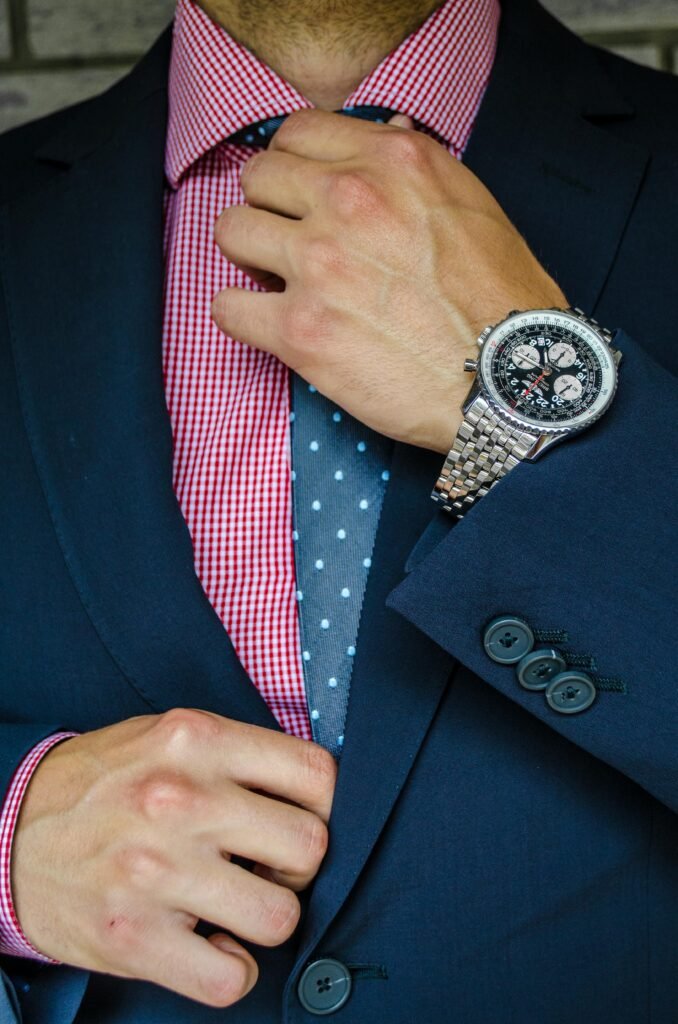The art of tying a knot is a more elaborate enterprise than one would expect when looking at the tiny area under the man’s neck. You can decide on the size and shape or play with symmetry — these characteristics will influence the final look of your knot. It’s worth remembering that the thickness, width, and the fabric your tie is made of affect the range of stylistic choices you can make.
The most petite knot is the Simple knot, also called the Oriental. It’s easy to make, so it’s the most commonly used, mainly for casual and business looks. You can pull off this knot with all ties, and it fits all shirt collars. Its appearance is tapered and elongated.
On the other end of the spectrum is the Balthus knot, the largest and the most eccentric one; you’ll only wear it occasionally. This symmetrical necktie knot was named after a Polish-French painter, who allegedly invented it out of boredom and rarely used it.

While Balthus is more on the audacious side, and the Simple knot is the essence of classy and easy, three other basic knots are used most often: Four-in-Hand, Windsor, and Half Windsor.
The Four-in-Hand, aka Schoolboy or Slim knot, is a narrow and asymmetrical knot that fits a narrow-spread collared shirt. This tie’s design makes shorter necks look slimmer and makes the entire silhouette taller.
The Windsor features a polished triangular shape, perfect for job interviews or social occasions that require an impeccable, formal look. Because it takes up a lot of space, it looks best with French collar shirts or open collar spread shirts. Its name derives from the Duke of Windsor, and it was allegedly invented at the beginning of the twentieth century to imitate the style of the actual royal knot.
Did you know that the Windsor knot is also called Double Scappino? In this version, its origin is the surname of Domenico Scappino, entrepreneur and founder of the homonymous company and inventor of this tie knot technique in 1930. Ties for this knotting method should be manageable in length, and they are best when they are designed from high-end fabrics (for instance, silk). Using a long tie is also a good idea with this knot because the number of knots requires a large part of the tie.
Half Windsor Knot is similar but less thick and can be achieved in fewer steps. Contrary to the super-official Windsor, Half Windsor is still chic but can also become your everyday knot. It will be stylistically flexible enough to pair up with all the ties’ fabrics. This necktie knot style is a chick, nicely triangular, and usually asymmetrical option, optimal for a wide-collared shirt. Make it with elegantly made neckties on the slippery side for the best result. For example, you may enjoy these pure 100% Mulberry Silk Ties & Neckties with unique printed artwork signed by artists by Nathon Kong. Some less popular classics are the carefree and astute Kelvin, the tasteful Pratt, and the charismatic Prince Albert.
Every knot has a distinct character, but the more extraordinary it is, the easier it becomes to display your openness to innovation or, on the other hand, admiration for eternal classics. Besides Balthus, other adventurous necktie knot stylistics include the unique charm of Trinity, a cylindrical, long, and jaunty Van Wijk, the futuristic feel of Eldredge, and a freakish concept that Murrell comes with. Remember that how you tie your necktie knot is sufficient to categorize your look as refined or sloppy. So, follow the tying instructions with attention so as not to deteriorate the look.